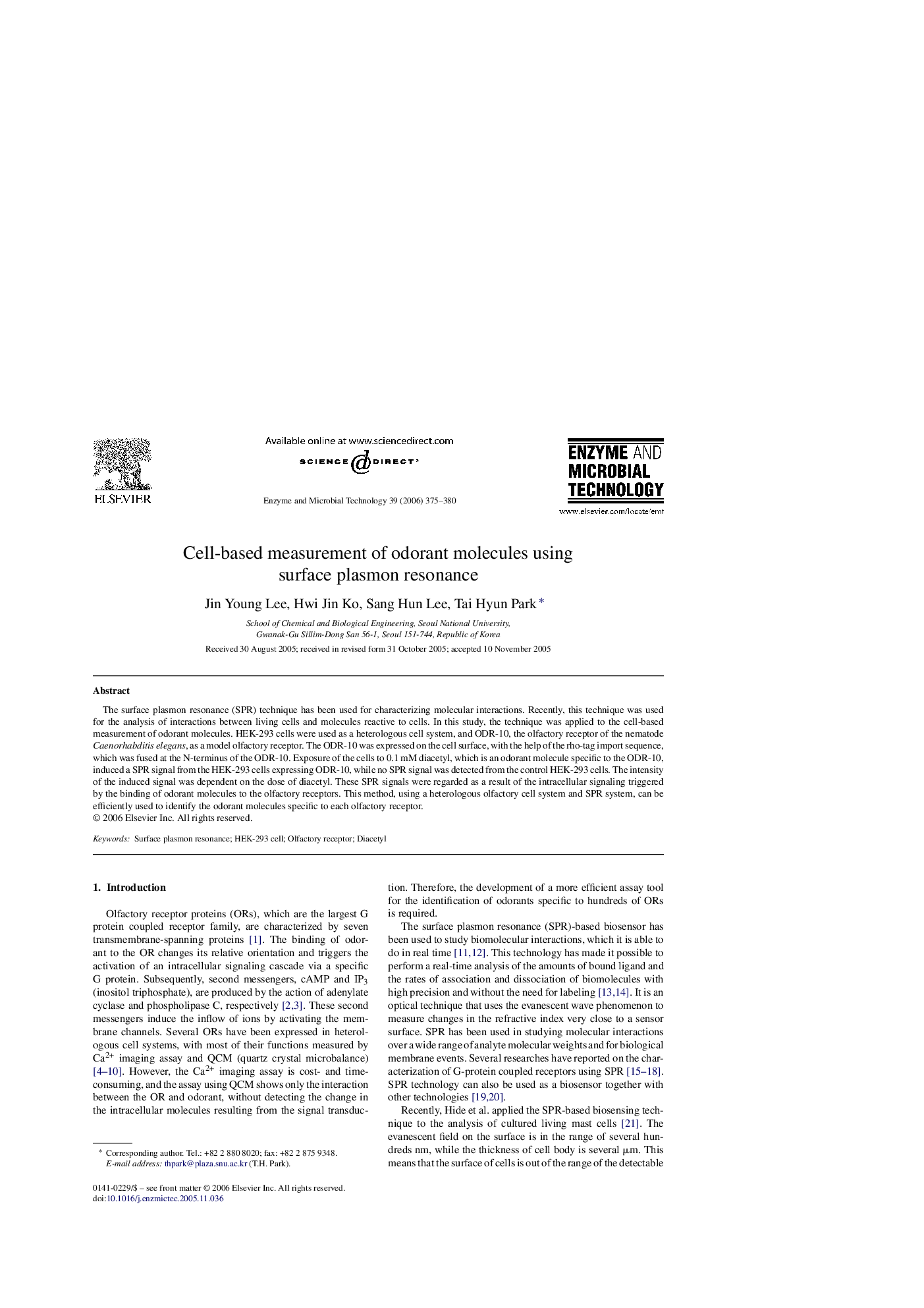| Article ID | Journal | Published Year | Pages | File Type |
|---|---|---|---|---|
| 18430 | Enzyme and Microbial Technology | 2006 | 6 Pages |
The surface plasmon resonance (SPR) technique has been used for characterizing molecular interactions. Recently, this technique was used for the analysis of interactions between living cells and molecules reactive to cells. In this study, the technique was applied to the cell-based measurement of odorant molecules. HEK-293 cells were used as a heterologous cell system, and ODR-10, the olfactory receptor of the nematode Caenorhabditis elegans, as a model olfactory receptor. The ODR-10 was expressed on the cell surface, with the help of the rho-tag import sequence, which was fused at the N-terminus of the ODR-10. Exposure of the cells to 0.1 mM diacetyl, which is an odorant molecule specific to the ODR-10, induced a SPR signal from the HEK-293 cells expressing ODR-10, while no SPR signal was detected from the control HEK-293 cells. The intensity of the induced signal was dependent on the dose of diacetyl. These SPR signals were regarded as a result of the intracellular signaling triggered by the binding of odorant molecules to the olfactory receptors. This method, using a heterologous olfactory cell system and SPR system, can be efficiently used to identify the odorant molecules specific to each olfactory receptor.
